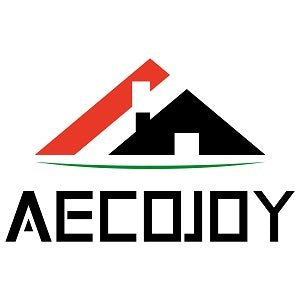Your shed’s roof does more than just cover the structure—it’s a key part of its functionality and look. The right shed roof style can protect your tools from rain, stand up to strong winds, and even make your shed blend better with your yard.
Whether you’re building a new shed or replacing an old roof, understanding shed roof style options is important. From the simple slant roof shed to the classic Gable Roof Shed, each style has its own pros and cons. Factors like shed roof pitch, shed roof design, and how easy it is to handle shed roof framing all play a role. Let’s start by exploring why choosing the right shed roof style matters in the first place.
1. Why Roof Style Matters for Your Shed?
You might think any roof will do for a shed, but the truth is, your shed roof style affects almost everything—from how long the roof lasts to how much work you’ll put into maintaining it. Here’s why it’s worth picking carefully:
It Protects Against the Weather
The main job of a shed roof is to keep water out, and that depends a lot on shed roof style and shed roof pitch. For example, a slant roof shed has a steep enough slope to let rain and snow slide off easily, which is great for rainy or snowy areas. A flat roof shed, on the other hand, needs extra care to prevent water from pooling—if you live in a dry area with little rain, it might work, but in wet climates, it could lead to leaks.
Shed roof pitch (the steepness of the roof) is a big part of this. A roof with a higher pitch (steeper slope) moves water faster, while a low-pitch roof is more likely to trap debris like leaves. This is why shed roof design often focuses on pitch first—get that right, and your roof will handle the weather better.
It Affects Shed Roof Framing and Durability
Some shed roof styles are easier to build and stronger than others. A Gable Roof Shed, for example, has simple shed roof framing—two sloped sides that meet at a peak. This makes it straightforward to construct, even if you’re new to shed roof plans.
A hip roof shed, on the other hand, has four sloped sides that meet at the top. Its shed roof framing is more complex, but it’s sturdier against strong winds. If you live in a windy area, the extra work in framing might be worth it for a roof that lasts longer.
It Impacts Style and Space
Your shed’s roof changes how it looks and how much space you have inside. A gambrel roof shed has two slopes on each side (like a barn roof), which creates more headroom—great if you need to store tall items like ladders or lawnmowers.
A flat roof shed has a low profile, which might fit better in a small yard or under power lines. A slant roof shed has a modern, clean look that works well with contemporary homes. Choosing a shed roof style that matches your yard’s vibe and your storage needs makes the shed both useful and nice to look at.
|
Shed Roof Style |
Key Benefit for Functionality |
Key Benefit for Style/Space |
|
Gable Roof Shed |
Simple framing, good water runoff |
Classic look, fits most yards |
|
Gambrel Roof Shed |
Extra interior space |
Barn-like, rustic appearance |
|
Hip Roof Shed |
Wind-resistant, durable |
Sleek, symmetrical design |
|
Flat Roof Shed |
Easy to build, low profile |
Modern, fits small spaces |
|
Slant Roof Shed |
Good water runoff, simple design |
Contemporary, clean look |
As you can see, every shed roof style has something to offer. Up next, we’ll break down the basics of shed roof design to help you understand what makes each style work.

2. Understanding the Basics of Shed Roof Design
Before diving into specific shed roof styles, let’s get clear on the basics. Knowing these will help you pick a roof that works for your shed, whether you’re following shed roof plans or building from scratch.
2.1 Key Elements of a Shed Roof Design
Every shed roof design has a few core parts that make it function, like the “building blocks” of your roof. Rafters are the slanted beams that form the roof’s shape—shed roof framing depends on strong rafters. In a Gable Roof Shed, rafters slope from the peak to the walls; in a hip roof shed, they slope from the top to all four walls.
Sheathing is the layer of material (like plywood) that covers the rafters, giving the roof a smooth surface and supporting the outer roofing material (shingles, metal, etc.). A slant roof shed might use metal for a modern look, while a Gambrel Roof Shed could use shingles for a classic vibe. Flashing, thin metal strips, seals gaps (like where the roof meets the walls) to stop water from leaking—critical for any shed roof style.
These elements work together. A flat roof shed needs sturdy sheathing to handle standing water (though it has a slight slope for drainage). A Gable Roof Shed relies on well-placed rafters to maintain its peak and shed water effectively.
2.2 How Roof Pitch Affects Performance
Shed roof pitch is the steepness of the roof, measured by how much it rises for every 12 inches of horizontal length (e.g., a 4:12 pitch rises 4 inches for every 12 inches). It’s a key part of shed roof design.
For water and snow runoff, a steeper pitch (like 6:12 or higher) lets rain and snow slide off quickly—great for snowy or rainy areas. A slant roof shed often uses a 3:12 to 6:12 pitch, balancing good runoff with simple shed roof framing. A flat roof shed has a very low pitch (1:12 or less), so it needs extra drainage to avoid pooling.
Weight capacity matters too. A lower pitch can handle heavier roofing materials (like clay tiles) because the slope is gentler. Steeper pitches are better for lightweight materials (like metal) that let snow slide off easily.
Wind resistance is another factor. A moderate pitch (3:12 to 6:12) works well in windy areas. Too steep, and wind can catch under the roof; too flat, and wind might push water under shingles. A hip roof shed often uses a moderate pitch to boost its wind resistance.
Steeper pitches in styles like the Gambrel Roof Shed create more headroom inside, leaving extra space for tall items. Most shed roof plans note the recommended pitch—Gable Roof Shed plans often suggest 4:12 to 6:12, while flat roof shed plans might stick to 1:12 with added drains.
3. Overview: 5 Popular Shed Roof Styles
Now that you know the basics, let’s look at the most common shed roof styles. Each has unique traits that make it a fit for certain needs—from easy shed roof framing to extra space.
3.1 Gable Roof Shed
This is the most popular shed roof style. A Gable Roof Shed has two sloped sides that meet at a peak, like a triangle. It’s simple, functional, and works with almost any shed.
Shed roof framing is straightforward—rafters slope from the peak to the top of the shed walls. You don’t need complex cuts, making it great for beginners following shed roof plans. It’s best for most climates, especially rainy or snowy areas, with a pitch (usually 4:12 to 6:12) that lets water and snow slide off easily. It has a classic look that fits most yards, and it’s easy to add windows under the gables (the triangular ends) to let light in.
3.2 Gambrel Roof Shed
If you need extra space inside, a gambrel roof shed is a smart choice. It has two slopes on each side—a steep lower slope and a shallow upper slope that meets at the top (like a barn roof).
Shed roof framing is a bit more work than a gable roof. The rafters need to be cut to create the two slopes, but many shed roof plans include pre-measured cuts to simplify it. It’s best for storing tall items (ladders, lawnmowers) or using the shed as a workspace, as the steep lower slope creates more headroom near the walls. It looks great in rural or rustic yards, but note that it’s not as wind-resistant as a hip roof shed, so it’s better for calm areas.

3.3 Hip Roof Shed
A hip roof shed has four sloped sides that meet at a single peak, making it symmetrical and sturdy. It’s a bit more work to build but pays off in durability.
Shed roof framing involves rafters that slope from the peak to all four walls, not just two. This creates a strong, balanced structure, though it needs precise cuts (follow shed roof plans closely). It’s best for windy or stormy areas, as the four slopes let wind flow around the roof instead of hitting it head-on. It has a sleek look that fits modern or formal yards, and the even slope means snow and rain don’t pile up—great for areas with harsh weather.
3.4 Flat Roof Shed
As the name suggests, this shed roof style is nearly flat (it has a very slight slope, around 1:12, to let water drain slowly). It’s simple and low-profile.
Shed roof framing is minimal—rafters are almost flat, and the sheathing creates the slight slope. It’s one of the easiest to build, even for first-timers. It’s best for small yards, under power lines, or dry climates. Its low height keeps it from blocking views, and it’s easy to access (you can stand on it to clean gutters, though be careful!). In rainy areas, you’ll need to check for pooling water regularly and ensure the drainage is working.
3.5 Slant Roof Shed
A slant roof shed (also called a “shed roof” in some plans) has a single sloped side—one wall is taller than the other, and the roof slopes from the tall wall to the short one.
Shed roof framing is super simple. Rafters slope from the top of the tall wall to the top of the short wall, with no peak. It’s great for custom sizes since you can adjust the wall heights. It’s best for modern yards or sheds attached to a house, with a single slope that looks clean and contemporary. It’s easy to match the roof pitch to your home’s roof, and water runs off quickly (thanks to the single slope). It’s also easy to add skylights on the sloped side for natural light.
4. Pro Tips for Shed Roof Framing and Planning
Follow plans: Use pre-made shed roof plans to avoid mistakes, especially for complex styles like hip or gambrel. Plans mark rafter lengths and cuts, saving time.
Check materials: For framing, use pressure-treated wood (resists rot). Match roofing material to the style—metal works for slant or gable, while rubber is good for flat roofs.
Pitch first: Decide on shed roof pitch early. Steeper pitches need longer rafters, so adjust shed height in plans to fit.
Seal gaps: Add flashing at roof edges and where rafters meet walls. Even small gaps cause leaks later.
For example, the AECOJOY 5x2 outdoor storage shed is a great fit for those focusing on practicality in shed construction. Its metal structure with a weatherproof design aligns with the emphasis on durable materials, and the reinforced frame ensures stability, complementing the tips for secure roof framing and long-term use.

5. How to Choose the Right Shed Roof Style for Your Needs
Use this quick guide to pick based on your priorities:
|
Priority |
Best Shed Roof Style |
Why? |
|
Easy framing/building |
Gable, Slant, Flat Roof Shed |
Simple rafter designs, no complex cuts. |
|
Windy/stormy areas |
Hip Roof Shed |
Four slopes handle wind and prevent water/snow buildup. |
|
Extra interior space |
Gambrel Roof Shed |
Steep lower slopes create more headroom near walls. |
|
Small yards/low profile |
Flat, Slant Roof Shed |
Low height fits tight spaces or under power lines. |
|
Rainy/snowy climates |
Gable, Slant Roof Shed |
Good pitch lets water/snow slide off easily. |
Budget-Friendly Shed Roof Replacement Options
Replacing a shed roof on a budget is easy when you focus on the basics. You just need to know when to replace it, pick cheap but good materials, and save money in simple ways.
First, figure out if you really need a new roof. Small issues like a few missing shingles or a single leak can be fixed with patches. But get a new roof if:
- The rafters are rotting, soft, or warped (structural damage).
- Leaks keep coming back even after patching.
- More than 30% of the roof material is ruined (like shingles that are curled or metal with holes from rust).
- The roof is 15–20 years old and looking worn out—replacing it is cheaper than fixing it over and over.
Next, pick affordable materials that fit your shed roof style. Asphalt shingles (around 1–3 per square foot) work for Gable Roof Shed, Slant Roof Shed, and Gambrel Roof Shed. They’re easy to put on, even if you’re new to this. 3-tab shingles are the cheapest and work fine for sheds.
Corrugated metal panels (2–4 per square foot) are good for Slant Roof Shed, Hip Roof Shed, and Gable Roof Shed. They hold up in rain and snow, and they’re light, so they won’t stress strong framing. For Flat Roof Shed, EPDM rubber rolls (3–5 per square foot) are perfect—they’re waterproof, easy to install, and handle standing water well.
Save money without making the roof worse. Reuse the framing if it’s still strong—only replace rafters or sheathing that’s damaged. This can cut material costs by 30% or more. Buy materials in late fall or winter when stores discount them (save 10–20%). Do the work yourself with a friend to skip labor costs (which can add half the total cost). And skip fancy extras—sheds don’t need expensive “premium” materials to work well.
Conclusion
The right shed roof style balances function and ease. Gable and slant roofs work for most, while hip is best for wind. Consider climate, space, and skill—then use shed roof plans to build or replace. With the right choice, your shed roof will last for years.























































